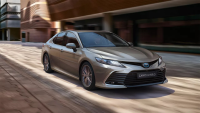The Kia Optima is a direct successor of the Clarus and Magentis models, whose assembly in was organized much earlier than Toyota Motor opened a production line for the Camry. However, repeated rearrangements in distribution, lack of centralized advertising and frequent changes in car names negated this head start. The payback was low sales, which could not be "pulled from zero" amidst an abundance of strong competitors. With the introduction of the Optima model - domestic dealers began offering it in 2012 - Kia's position in the Camry-class has strengthened dramatically, and a couple of years ago it became key. This coincided with Kia's improved brand image, extensive dealer network development and successful pricing and warranty policy.
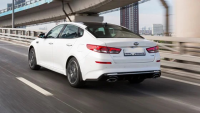
TOYOTA CAMRY
It's hard to believe today, but at the beginning of the 2000s, annual sales of the Camry in Europe were in the hundreds; today, that's a weekly sales volume. The Camry's best year ever was 2012, when dealers delivered nearly 35,000 cars to their customers, and the current numbers remain at a comparable level. The main reason the Camry ended up among the bestsellers is apparent to the surface: it was the organization of full production at the Toyota Motor plant near Plovdiv which ensured the car's full adaptation to the market in terms of technology, configurations, and, of course, prices. Not the least of these factors was the impeccable reputation of the brand and the forced removal of the Avensis model from the dealer's price list.
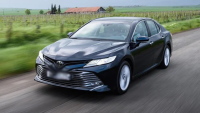
DESIGN
The KIA brand has achieved a lot through its aggressive strategy, including in design. But with the launch of the second-generation Optima, the Koreans have shown rare conservatism by reducing the amount of exterior changes to a minimum. Therefore, the work stays with the image that is original and recognizable and that debuted almost a decade ago. As for the interior design, the second Optima looks quieter and more solid than the first one with its purposefully sporty cockpit. Finally, we should say that the current model is rapidly approaching the end of its life cycle and will be replaced in the coming months.
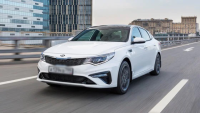
After the change of generations Camry literally reborn - stocky silhouette and low waist line evoke memories of the glorious 1980s, when the foundation of the current image of the Japanese car as a standard of reliability and durability. However, it is not longing for the past at all, but a sight into the future - Camry strictly follows the newest design canons of Toyota brand. By the way, the hypertrophied air inlet of a forward bumper and a sloping line of a roof are from it. The interior of the car is noticeably enlivened by the asymmetrical contours of the center console, which boldly redraw the boundaries of the main functional areas.
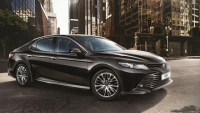
SIZES
One of Kia's strengths is the remote trunk opening system, which already appears in the middle variants. But there is no full-fledged electric drive here - however, as well as in Camry. Adjusting the status of the Japanese car, it causes bewilderment. The trunk capacity is almost identical: Optima offers 510 liters vs. 493 liters, but in flagship versions of Camry the figure drops to 469 liters, and the difference becomes appreciable. The reason is that expensive versions of Camry are equipped with electric adjustment of backsides of rear seats, which come with a three-zoned climate control. To the detriment of its "representative" functionality Kia has nothing similar. Finally, it is worth mentioning that both sedans are equipped with full-size "spare wheels".
We shall begin the discussion about the capacity of the cars with statement of fact, that on paper the parity between them is observed. Toyota has 2 cm more wheelbase and 3 cm more overall length than Kia, but loses 2 cm in overall width. The Camry's height is 3 cm less, but that doesn't mean the Japanese sedan sits lower - quite the contrary, it has 5 mm more ground clearance. Camry is known as a spacious car, otherwise it would not be so favorite among officials of all stripes. However, the Optima with its low seats of the second row is not worse; the main thing is to refrain from temptation to order a spectacular panoramic roof, which mercilessly "eats" a significant part of the internal height. By the way, the Camry has no such option at all.
TECHNIQUE
The most impressive engine in Camry's arsenal is a 3.5-liter V6 (249 hp), which the Optima contrasts with a two-liter turbo four with 245 hp. However, it does not cause special enthusiasm in buyers: the clients prefer the power unit simpler and more coasting. In Kia's case, it's a 2.4 GDI engine with direct injection. It has similar power (188 hp vs. 181 hp) and torque (231 vs. 241 Nm) specifications, slightly higher fuel consumption, which is partially compensated by a larger tank volume (70 vs. 60 liters). Drive is expectedly front-wheel drive, the transmission is 6-speed automatic in the vast majority, but the base configuration provides a manual gearbox. Suspension scheme duplicates Camry.
The Japanese model offers front-wheel drive and a six-speed automatic on a non-alternative basis. Suspension design is more than traditional: McPherson in front, multilever scheme in back (the Optima also uses it). Electric booster steering mechanism is located on a rack, not on a steering shaft; it is not cheap, but it is right: it is considered that so the driver feels the car better. At any rate, the Optima is equipped with such a rack (it is called R-MDPS) only in the top version of the GT, and the other versions are satisfied with the power on the steering shaft. Camry buyers can choose from three engines, but the most popular is the 2.5-liter atmospheric four with simple distributed injection.
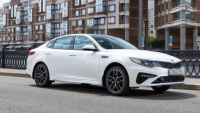
BASIC CONFIGURATION
We shall remind that in "base" Kia has a manual gearbox, but not automatic, as in Camry. In addition, there is primitive air conditioner instead of climate control and halogen instead of xenon, to say nothing of diodes. Optima tries to make up for these disadvantages with cruise control, light sensor and bluetooth-connection support, though such replacement does not seem equivalent. At the head of the complex of active safety is an integrated system of active control VSM, which is subordinated not only to the system of directional stability ESC, but also the electric power steering. This is more serious!
A pair of words about base kitting. It is clear that the most "tasty" things are reserved for expensive versions, but there is also something interesting in the simplest cars. For example, the list of standard Camry's equipment includes fully LED headlights, tire pressure sensors, and even a hill assist system. The rest looks ordinary: cloth interior with heated front seats, climate control, multicool, six airbags, 16-inch wheels, and electrically folding exterior mirrors.

OPTIONS
The exclusives that the Optima has, unlike the Camry, are limited to four items. These are a panoramic sunroof, GT Line styling package, automatic parking system and a driving mode selector. With everything else - four all-around cameras, ventilated front seats, wireless gadget charging, or a knee airbag for the driver - Camry buyers can't be surprised. The only thing that will cause them some annoyance is the gearshift paddle, which is standard in all Kia automatics. To get the same device in a Camry, you'll have to order the expensive 3.5-liter modification.
The volume of available options puts the Camry one step above the Kia. A lot of things here support the use of the car for executive purposes - in particular, a separate control unit for the seats, climate and audio system in the second row, power rear curtain, air ionizer and additional airbags. Toyota offers its customers an abundance of advanced systems: adaptive cruise control, pedestrian and road sign detection, automatic braking, and driver fatigue control. None of these are available in the Optima, including a projection display or electric steering column.

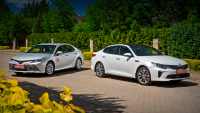
-rear-and-front-view-camera-6.png)
